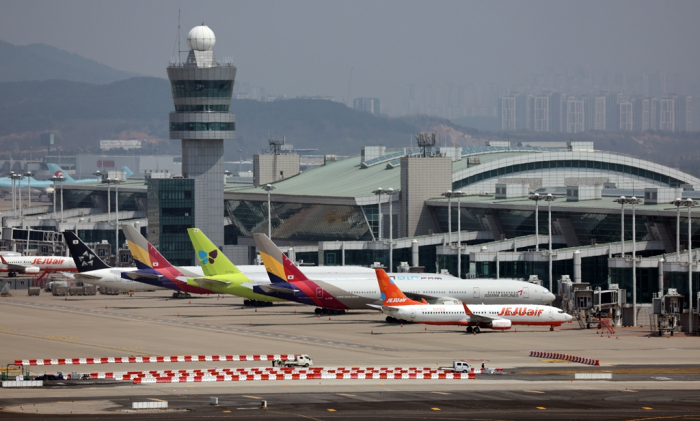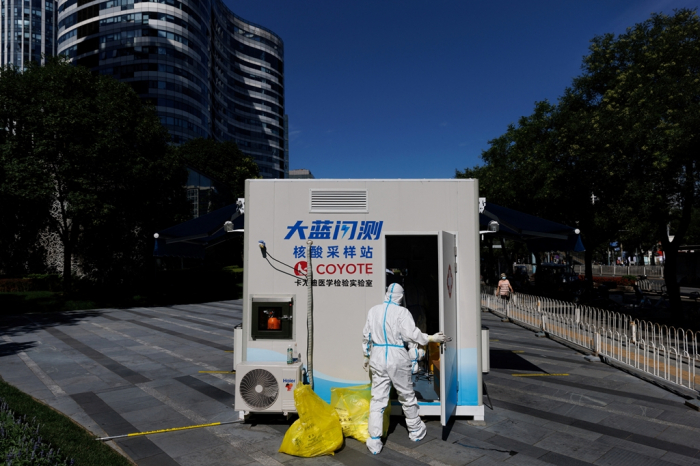Airlines
Korean LCCs’ international flight recovery remains slow
Routes for key destinations such as China and Japan yet to normalize; a resurgence of COVID-19 may stop flights to Southeast Asia
By Jul 15, 2022 (Gmt+09:00)
2
Min read
Most Read
LG Chem to sell water filter business to Glenwood PE for $692 million


Kyobo Life poised to buy Japan’s SBI Group-owned savings bank


KT&G eyes overseas M&A after rejecting activist fund's offer


StockX in merger talks with Naver’s online reseller Kream


Mirae Asset to be named Korea Post’s core real estate fund operator



South Korean budget airlines are seeing a slow recovery in international flights as key routes such as China and Japan have yet to normalize while ticket prices remain high.
Since Korea's hub airport of Incheon returned to normalized operations on June 8, the country’s five low-cost carriers (LCCs) – Jin Air, Jeju Air Co., T'way Air Co., Air Busan Co. and Air Seoul – recovered only 9% their number of international flight passengers on average from the same period in 2019, according to data from the Ministry of Land, Infrastructure and Transport.
Air Busan’s international flight passengers totaled about 20,000 during the period, some 5% of the 400,000 in the same period of 2019 before the outbreak of COVID-19. Jeju Air has served some 60,000 passengers on overseas routes this year, some 6.8% of the 890,000 in 2019.
On the other hand, full-service carriers (FSCs) including Korean Air Lines Co. and Asiana Airlines Inc. have recovered about 23% of their international flight passengers.
The number of Korean Air and Asiana international flight passengers reached about 490,000 and 330,000 this year, respectively, compared with 2.2 million and 1.5 million in the same period in 2019. Korean Air and Asiana served some 100,000 and 60,000 passengers, respectively, for international flights in the same period in 2021.
CHINA, JAPAN, SOUTHEAST ASIA
Local budget airlines have yet to normalize their flights to China and Japan, hurting a recovery in the LCCs’ international flights. Those airlines, which mainly focus on short- to medium-haul flights, generate about 80% of their sales on routes from these neighbors as well as to and from Southeast Asia.
The Chinese authorities continue to restrict international flights, given the country’s zero-COVID policy.

Japan is currently allowing only group tours. The government postponed the Go To Travel Campaign, a program scheduled to start this month to encourage travel across the nation, as fresh COVID-19 cases in the nation exceeded 70,000 as of July 12.
“We had expected Japan to allow individual tours around September, but it may be difficult given the current situation,” said a South Korean LCC official.
A resurgence in COVID-19 cases may stop flights to Southeast Asia recently resumed by Korean LCCs.
PRICEY TICKETS
Higher ticket prices on a surge in fuel prices are another hurdle for LCCs. For example, a low-cost round-trip LCC ticket to Southeast Asia in August now costs about 800,000 won ($603.3) per person, about 60% higher than pre-pandemic prices.
The price hikes burden to LCCs since they heavily rely on demand for cheaper prices. That also prompted customers to seek FSCs that provide better services.
To cope with such difficulties, the budget airlines quickly added new routes and resumed flights, which had been suspended due to COVID-19, in line with the transportation ministry's measures to normalize international flights.
Jeju Air and T’way Air launched flights for Incheon and Ulaanbaatar, while Air Busan restarted the route from Busan, South Korea’s No. 2 city, to Cebu, in the Philippines.
Write to Jeong Min Nam at peux@hankyung.com
Jongwoo Cheon edited this article.
More to Read
-

-
 AirlinesKorea airlines grounded by oil, currency, interest rates
AirlinesKorea airlines grounded by oil, currency, interest ratesJun 17, 2022 (Gmt+09:00)
2 Min read
Comment 0
LOG IN


